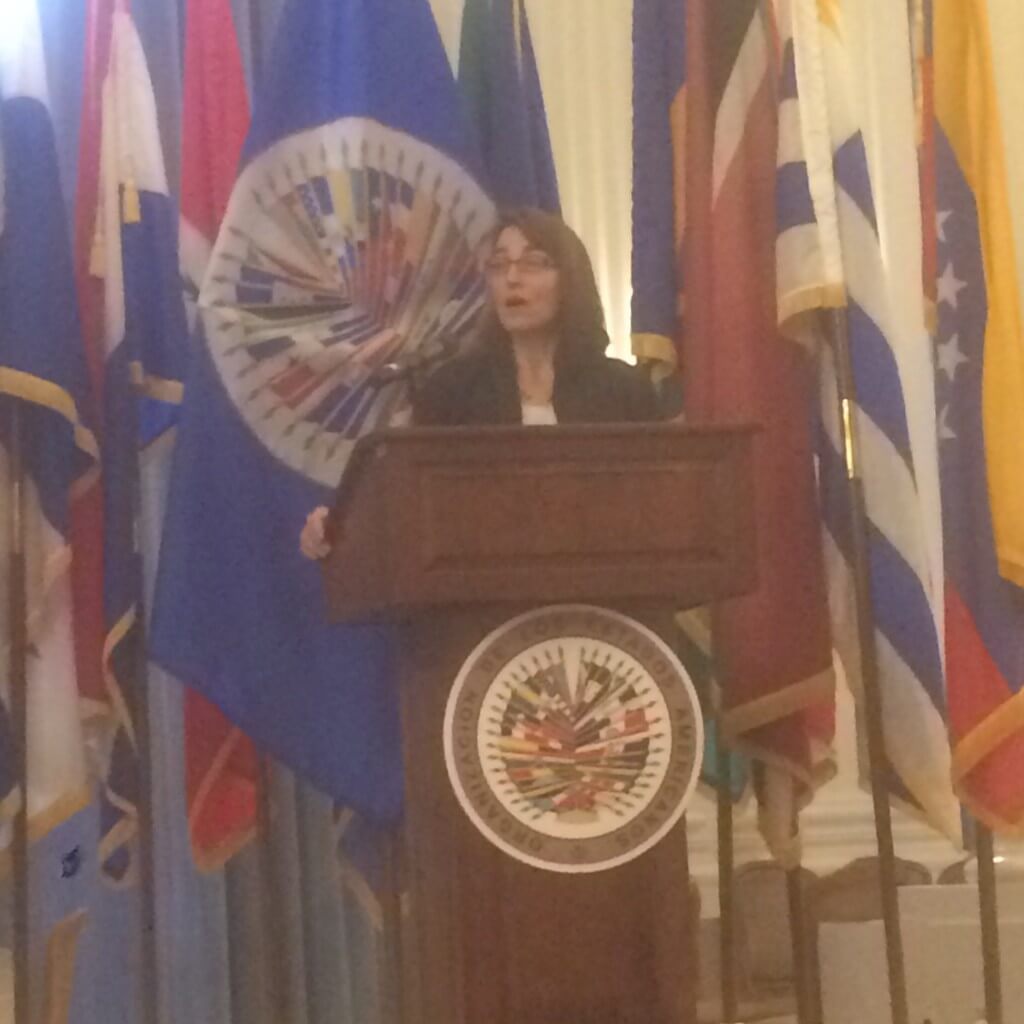
Sarah Sewall of the U.S State Department addresses an international crowd at the Organization of American States on the state of women’s access to justice in preventing violence. (Noah Fromson/Medill News Service)
WASHINGTON — The U.S. and Latin American governments should follow Canada’s lead and investigate the high rate of violence against indigenous women , experts said Tuesday.
In honor of International Women’s Day, the Organization of American States, which promotes cooperation among countries in North, Central and South America, asked experts to look at solutions for the plight of indigenous women. An OAS report found that only eight of its 32 member nations in North, Central and South America had “comprehensive laws on violence against women.”
The Canadian government estimated that over 4,000 indigenous women there have been murdered or have disappeared over the last 30 years, which is almost 3,000 more than the Royal Canadian Mounted Police calculated in 2014.
In response, the government last year provided 40 million Canadian dollars ($30 million) for a national investigation of what happened to the missing and murdered indigenous women. There have been multiple roundtable discussions, and a full-scale inquiry is expected to launch this summer.
Part of the inquiry’s goal is to “implement the proposed Canada-wide prevention and awareness campaign focused on changing public perception and attitudes to help end violence against Indigenous women and girls,” according to the Office of the Premier in Ontario.
But violence against indigenous women isn’t just a Canadian problem, it is a problem across all the Americas, said Barbara Bailey, a Jamaican representative on the Inter-American Convention on the Prevention, Punishment, and Eradication of Violence against Women.
In the U.S. indigenous women are more than 2.5 times more likely than other women to be raped or sexually assaulted, according the Justice Department.
A 2015 study by a U.N. commission on Latin America found that about 38 percent of indigenous women in Ecuador and Peru, 24 percent in Guatemala and 20 percent in Paraguay have been victims of physical or sexual violence by a partner.
Preventing violence against women means addressing imbalances in education, politics and the workforce where women are treated worse than men, said Sarah Sewall, the under secretary for civilian security, democracy and human rights for the U.S. State Department.
“Some of the poorest women are trapped in a web of forced labor and prostitution,” Sewall said. “Even if they know how to seek justice, they have precious little time and even fewer resources to pay for effective legal support.”
Countries haven’t done enough to address the socioeconomic factors that affect marginalization and vulnerability of these women have been insufficient, “thereby predisposing them sexual exploitation, to trafficking and to be victims of genocide,” Bailey said.
According to Seawall, the plight indigenous women highlights “the twisted ways in which gender racism and violence intersect to put minority women in harms way and put justice out of reach” and the need to “move forward on this critical issue.”


